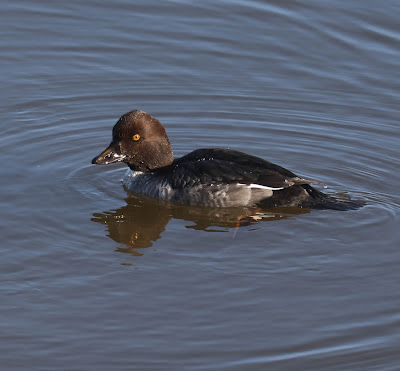A Red throated Diver that has been present at Upper Bittell Reservoir in Worcestershire for around a week roused my interest in what is a quiet time of year for birding and I decided to make the not too arduous journey to see it. I have seen any number over the years from coastal seawatches to breeding on lochs in Shetland but one inland in England was sufficiently infrequent to be worth the effort to go and have a look.
The trip would also allow me to further familiarise myself with a new camera and its various settings and idiosynchrasies. Focusing on a larger bird and practicing would hopefully allow me to be ready to deal with the much smaller bird species such as warblers which would inevitably test my camera skills sooner or later.
The journey from my home to Upper Bittell Reservoir is not that long and today was forecast to be sunny after some early rain. I had never travelled to this location before but it was easy enough to find by following my satnav's directions.
Parking in an area just large enough to accommodate three cars I made my way along a lane and after a short walk found myself on the dam wall of the reservoir which has a public footpath running across it.
Just as well, for the manager of the yacht club which uses the reservoir told me I had to be a member of the yacht club to walk anywhere else around the reservoir. This would cost me £20.00 but thankfully was not necessary as the diver was fast asleep on the water bang in front of the dam wall and viewable from the footpath.
The diver remained asleep for another five minutes and then commenced preening before drifting further out onto the reservoir and going back to sleep.Essentially grey and white in winter plumage, they are the smallest of the four diver species that occur in Britain and the commonest.
However, as I mentioned they are unusual inland especially in the middle of England and one can only speculate that this bird was driven inland by recent high winds and for now has opted to settle here for a spell but will probably move on to its more normal winter habitat on the sea. It certainly shows no sign of injury or illness and gave every impression of being entirely content where it was.
While watching the diver a first year Common Goldeneye, possibly bred in Scotland came close to the dam wall diving for food. Immatures and female Common Goldeneyes look very similar but adult female Goldeneyes have a yellow tip to their bill.
Maybe rain goose was not so fanciful after all.


.jpg)








No comments:
Post a Comment